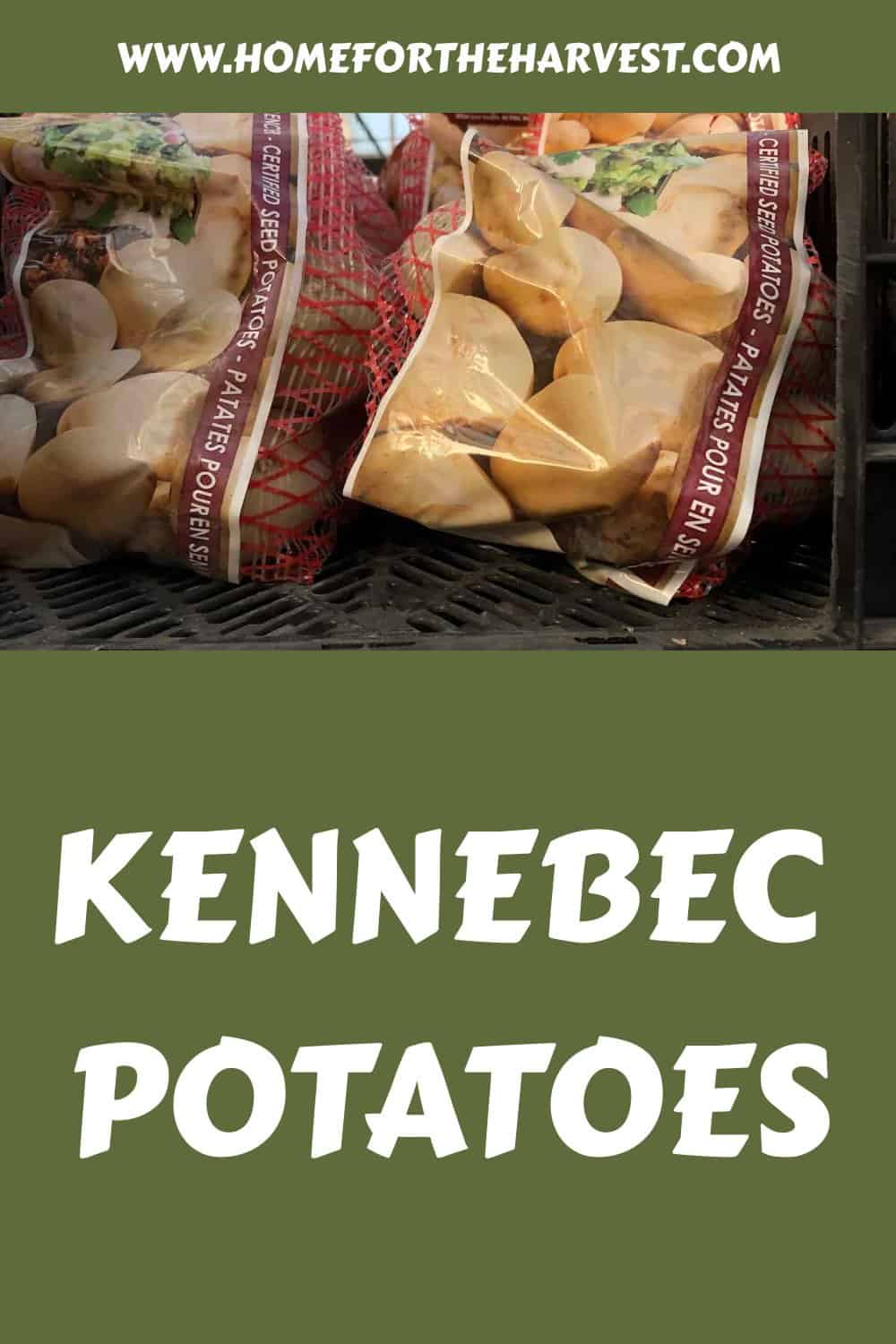Looking for a classic all-purpose potato to grow in your garden? Try the delicious Kennebec potato!
Kennebec potatoes are a gourmet potato variety with white flesh and smooth thin brown skin. These potatoes have a smooth yet fluffy texture and are well-suited to baking, boiling, frying, or stewing. They’re specifically known as one of the best for making French fries or potato chips. Kennebec is a midseason variety from Maine that typically takes about 90 days to mature.
Read on to learn all about Kennebec potatoes!
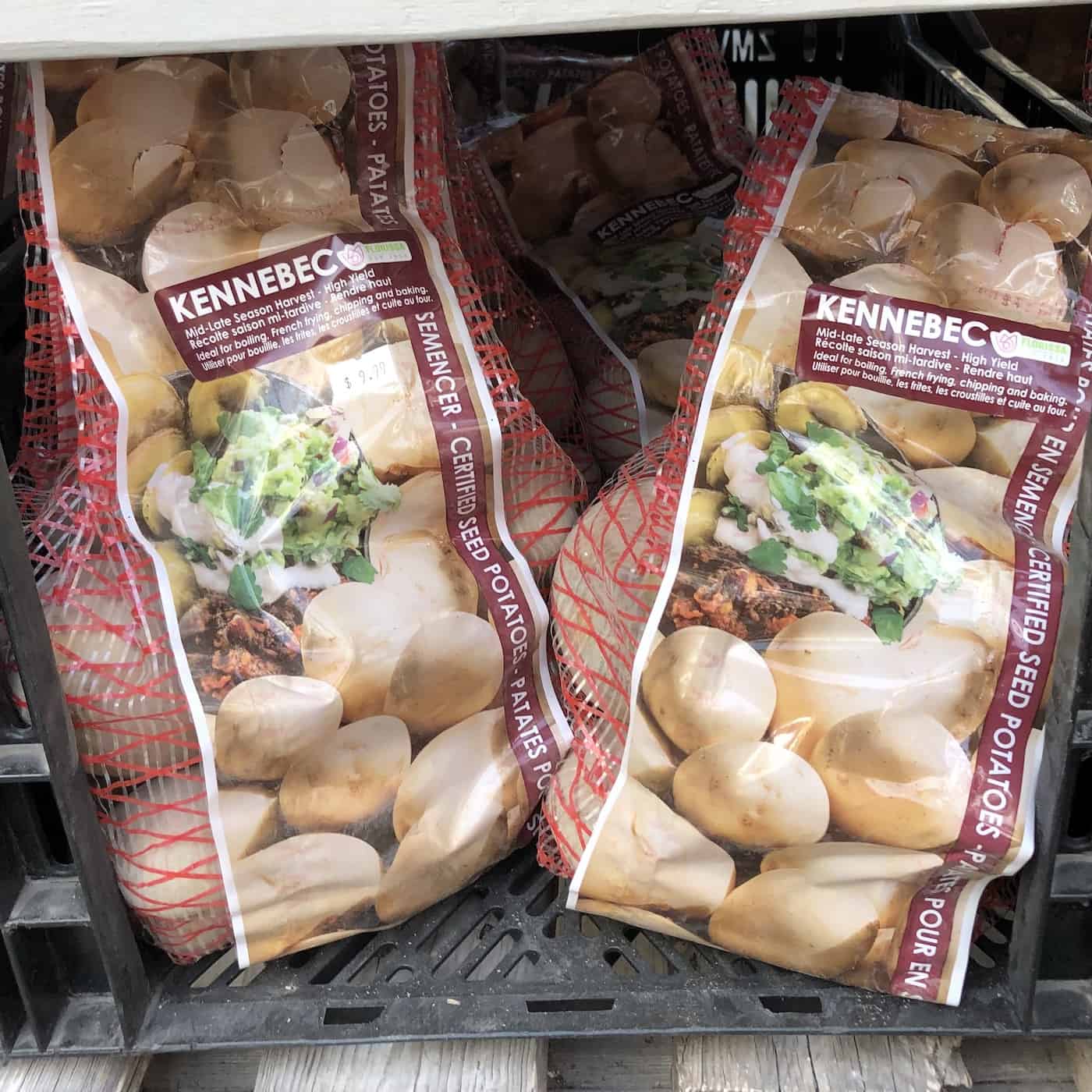
Introduction to Kennebec potatoes
Kennebec potatoes are a versatile and popular variety that has been enjoyed by gardeners and home cooks for many years. Bred by the USDA in Maine, these potatoes have white flesh with smooth, waxy skin, and they are known for their delicious flavor and fluffy texture. They also have a very high starch content and store very well.
While this is a great all-around variety for home gardeners, Kennebec potatoes are often grown commercially for gourmet potato chips. They are great when fried and are sought-after by chip and french fry producers.
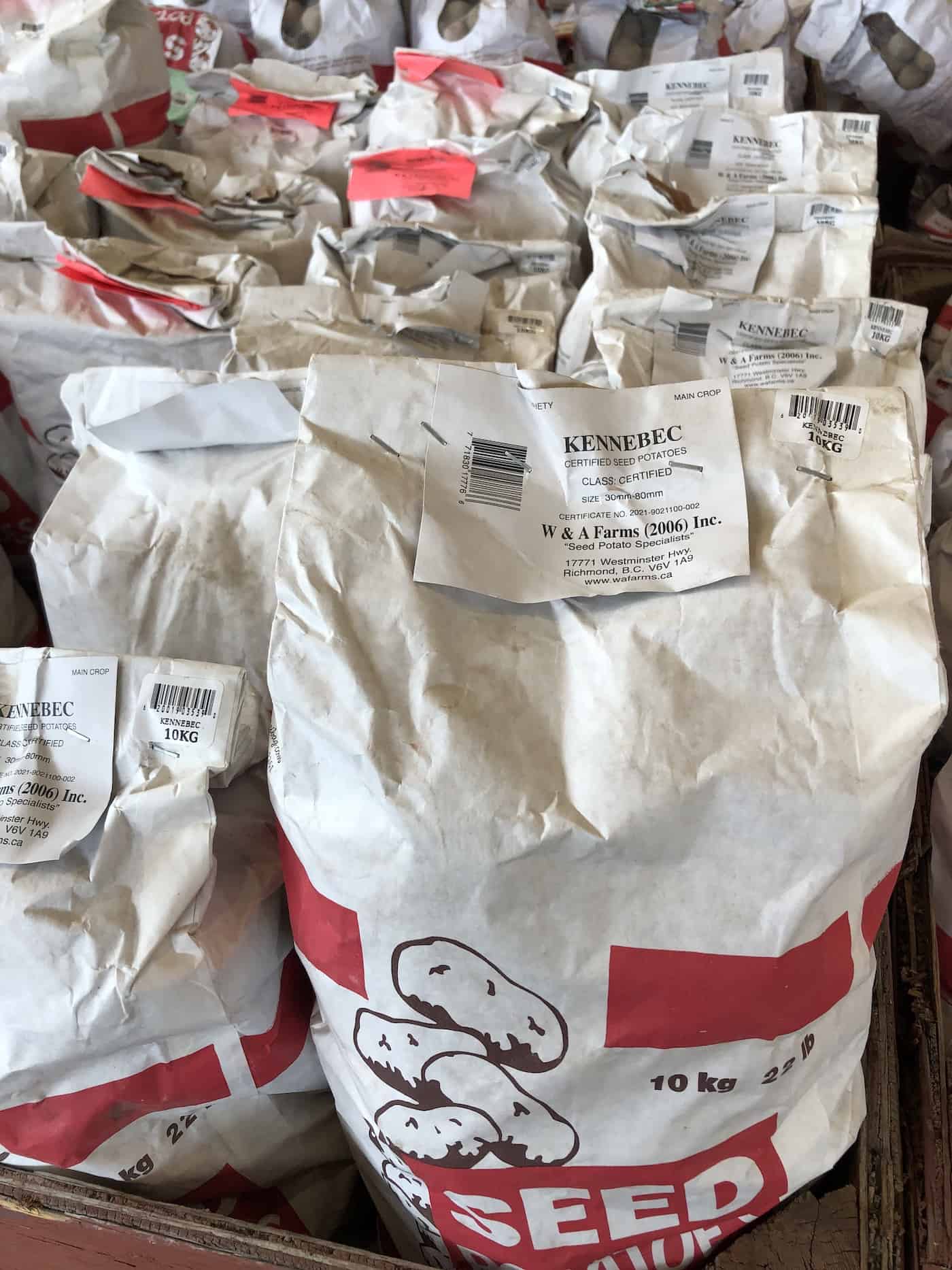
Where to buy Kennebec seed potatoes
To grow potatoes, you’ll need to find some seed potatoes of this variety. These are certified disease-free potatoes selected especially for planting. Kennebec seed potatoes are popular and available for purchase from many online retailers and garden supply stores.
When to plant Kennebec potatoes
The ideal time to plant Kennebec seed potatoes is about two-four weeks before the last spring frost. This may be as early as February in the south and as late as May in very cold climates. Here is an estimate based on gardening zone:
- Zone 10+: January
- Zone 9: early February
- Zone 8: late February
- Zone 7: early March
- Zone 6: late March
- Zone 5: early April
- Zone 4: late April
- Zone 3: early May
- Zone 2-: late May
Kennebec potatoes take about 90 days to mature after planting the seed potatoes.
Preparing seed potatoes for planting
Cut the seed potatoes into pieces, leaving one to three eyes on each piece. Allow the pieces to dry fully so that there is no moisture left on the cut surface. Letting the cuts dry will help prevent them from rotting in the ground and make them less vulnerable to insects.
How to plant Kennebec potatoes
To plant Kennebec potatoes, you will need to find an area of your garden that receives full sun and has well-draining soil. This variety is fairly adaptable to different soil types, but it does prefer a slightly acidic soil pH in the range of 5.5-6.5. Additionally, Kennebec potatoes should be planted in an area with a soil temperature of at least 60 degrees if possible.
Start by digging holes or a trench that’s about 6″ deep. You can also plant them in grow bags.
When planting, set the potato pieces 3-6 inches deep and about 12 inches apart. Make sure the sprouts are pointing upwards. Bury the pieces with a few inches of soil. After planting, water the well to help the potatoes establish themselves in their new home.
Growing Kennebec potatoes
Kennebec potatoes require “hilling” just like other potato plants. To hill, the plants, add more soil around the main stem. Potatoes are usually hilled every two weeks or every 2″ high that the stems grow.
Mount the dirt up around the stem to create the “hill”. The hills protect the potatoes from sunlight and also keep weeds down and make more room in the soil for the tubers to grow.
Watering requirements for Kennebec potatoes
Kennebec potatoes require regular watering in order to thrive and produce a good harvest. In general, the plants should be watered at least once a week, although more frequent watering may be needed during periods of hot or dry weather.
It’s important to keep the soil consistently moist, but not wet or muddy, in order to help the potatoes develop properly. In general, you should water the plants for about 20 minutes per week or until the soil is thoroughly saturated. It’s also important to avoid overwatering, which can cause the tubers to rot and spread disease in the soil.
There are a few different methods that can be used to water Kennebec Potatoes. One option is to use a soaker hose or drip irrigation system, which will evenly distribute water to the plants without wetting the leaves. Set up the system so it’s easy to set aside when hilling up the plants.
Another option is to water with a garden hose using a gentle spray setting. Be sure to evenly soak the ground around the plants, taking care not to wet the leaves. After watering, allow the soil to drain completely so that the roots don’t become waterlogged. You can also use an overhead sprinkler but try to water only in the morning so that the leaves have a chance to dry off before the evening arrives.
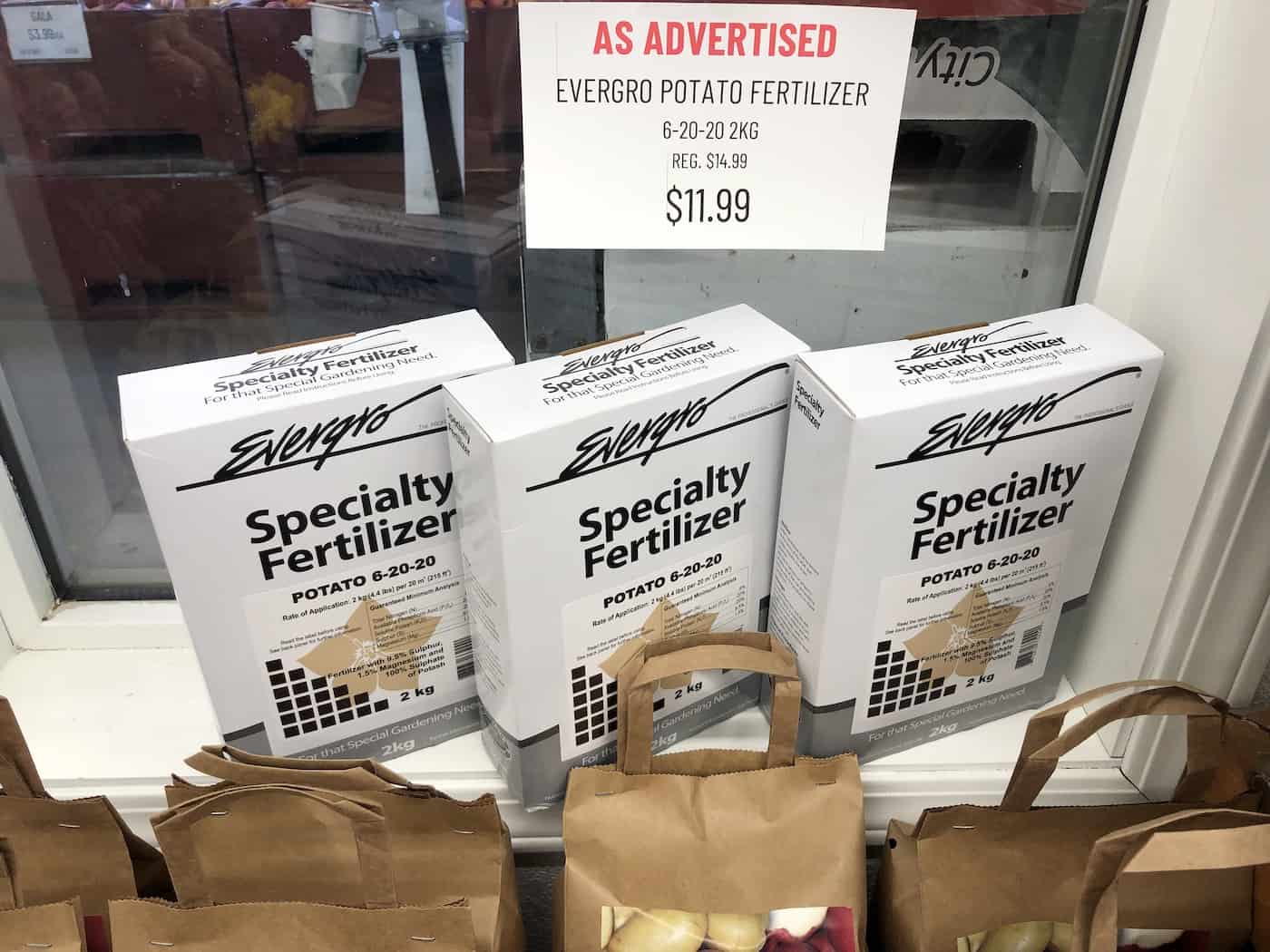
Fertilizing Kennebec potatoes
Kennebec potatoes typically don’t require a lot of fertilizer, but they will benefit from a light application of fertilizer during the growing season. For best results, use a balanced fertilizer for the young plants. Apply the fertilizer according to the manufacturer’s instructions, taking care not to over-fertilize the plants.
Some good choices for fertilizers for Kennebec potatoes include organic options like compost, manure, or fish emulsion. These natural fertilizers can help build soil quality and provide essential nutrients to support healthy potato growth.
Harvesting Kennebec potatoes
Kennebec potatoes are usually ready to harvest in late summer or early fall, depending on the climate and growing conditions. You’ll typically begin to see small tubers forming near the soil surface after about 70-80 days of growth. These new potatoes can be gently harvested while the lower potatoes mature into full-size potatoes. Just be sure not to damage the plant and to replace the soil after harvesting the new potatoes.
To harvest full-size Kennebec potatoes, simply dig up the entire plant and remove any extra soil from the roots. Use a garden fork to carefully lift up the plant (trying not to damage any tubers in the process).
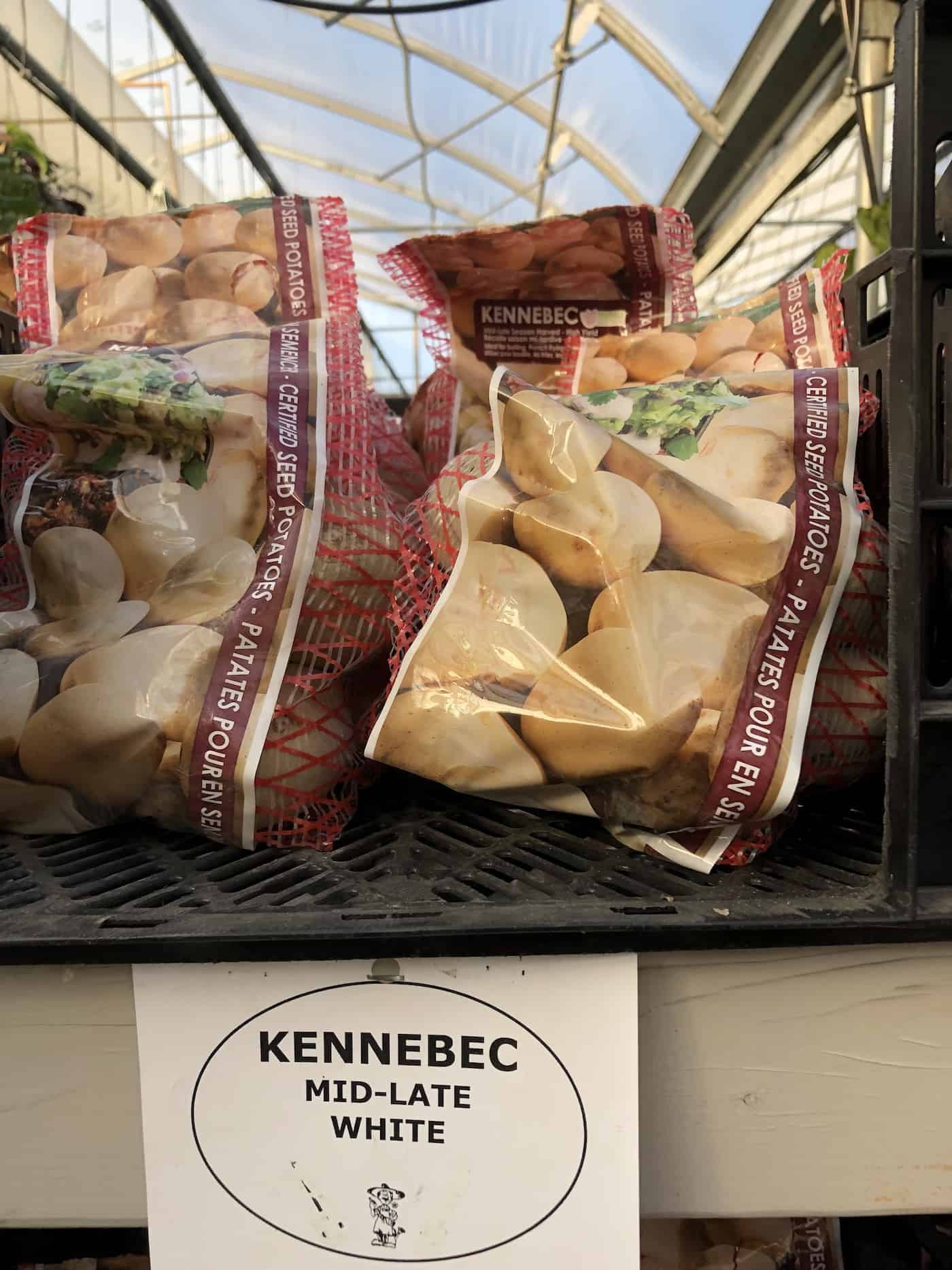
Companion plants for Kennebec potatoes
Some good companion plants for Kennebec potatoes include peas, onion, lettuce, and nasturtium. These plants can help improve the yield of your potato crop by providing essential nutrients to the soil. They also help to keep pests and diseases at bay, which can reduce the amount of damage to your potato plants.
Read more about companion plants for potatoes.
Pests affecting Kennebec potatoes
Kennebec potatoes are commonly affected by a number of different garden pests, including slugs, aphids, beetles, and caterpillars. These pests can cause significant damage to the plants by feeding on the leaves and tubers, resulting in poor growth or reduced yields.
To prevent these pests from affecting your Kennebec potato plants, it’s important to regularly inspect the plants and remove any pests that are found. You can also use barriers like row covers or netting to keep pests from getting to the plants in the first place. If you notice significant damage, you may need to treat the plants with an organic insecticide.
Diseases affecting Kennebec potatoes
There are a number of different diseases that can affect Kennebec potatoes, including early blight, late blight, and Verticillium wilt. These diseases can cause the leaves to turn yellow or brown, and they can also cause the tubers to rot.
To prevent these diseases from affecting your Kennebec potato plants, it’s important to avoid planting potatoes in the same spot where they’ve been grown previously, as this can lead to the build-up of disease organisms.
FAQs about the Kennebec potato variety
What are Kennebec potatoes good for?
These potatoes have a smooth yet fluffy texture and are well-suited to baking, boiling, frying, or stewing. This variety from Maine is known as one of the best for making French fries or potato chips.
What is the difference between Kennebec and Russet potatoes?
Russet potatoes have thicker dark-brown skin, dryer flesh, and higher starch content than Kennebec potatoes.
What does a Kennebec potato taste like?
Kennebec potatoes are known for their rich, buttery flavor. They are often used to make potato chips.


